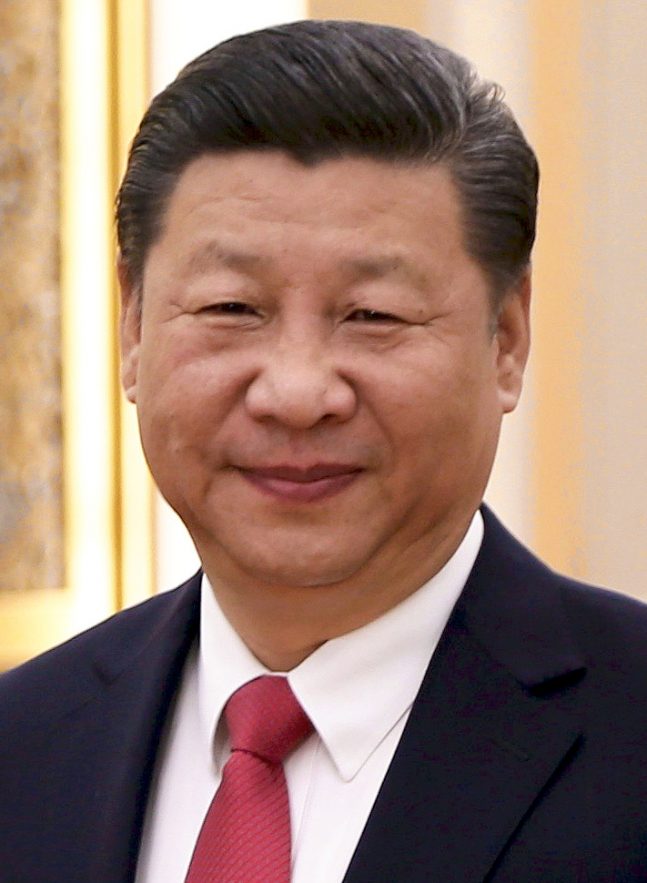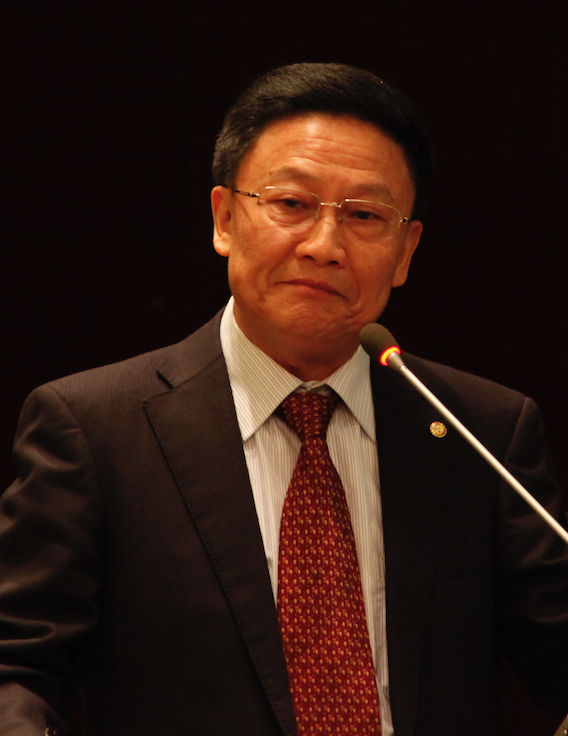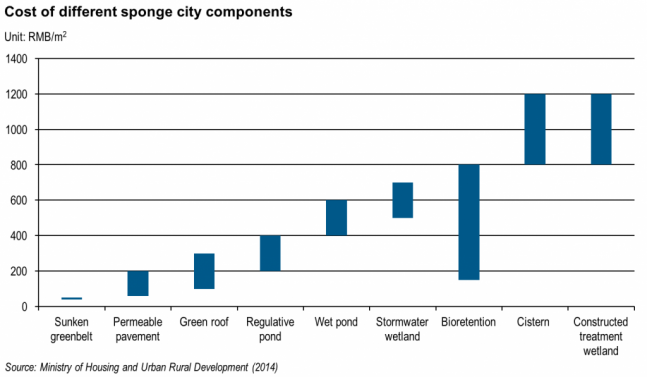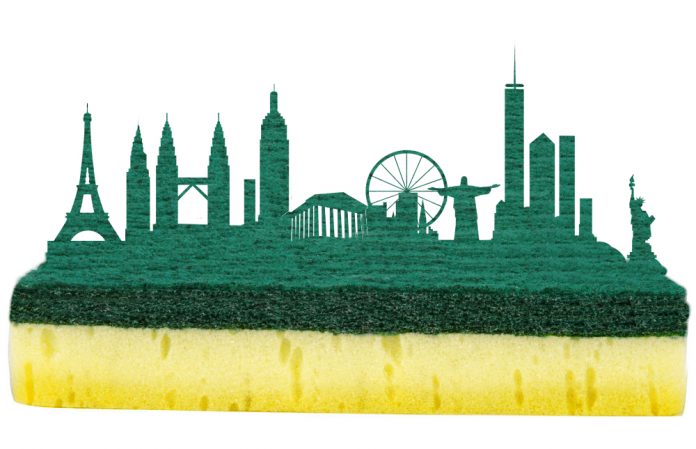China’s ambitions–for its so-called ‘sponge’ cities–to slow, sink and store runoff exemplify a universal struggle of urban planners united with water professionals against a volatile climate. By James Workman
As Xi Jinping ascended to power, he watched, all around him, the equally swift rise of cities.
At his birth in 1953, cities housed just one in nine Chinese; by his marriage in 1987, one in four. By the time he became president, half his country was urbanised across 662 major cities, 100 of them larger than 1 million. From the Chongqing megalopolis (population 30 million) downwards, cities anchor Xi’s ‘Chinese Dream’, his vision of strength, to be reached by marching along ‘the Chinese path’.
Only now that path will not be paved.
While sudden, this dramatic reversal was years in the making. Xi, a former student of chemical engineering at Tsingua University in Beijing, and party leader in Shanghai, confronted an urban paradox. While increasingly in need of supplies, China’s cities were aggressively expelling freshwater.
Indeed, this eviction of water was a sign of urban progress, carried out with the best intentions. To remove an old public health threat–dank, dirty water associated with mould, mud, mildew and miasma–city codes and officials cleaned up, ridding streets and lots of stagnant pools. So across an aggregate 40,000 square kilometres, engineers drained wetlands, tarred rooftops, mounted metal gutters, spread asphalt, poured cement over muddy sidewalks, and sent ‘wastewater’ racing away down enclosed storm sewers.
Never before had so much porous living landscape, been made so impenetrably hard, so fast.
Yet as urban surfaces calcified into a waterproof shell, old problems got worse. City drainage systems were built according to static assumptions, based on past averages; planners did not anticipate or cope with the high-density downpours of a fast-warming climate. In 2013, some 234 cities were flooded due to extreme rainfall–exposing people to lethal risks and eroding billions from assets– while researchers found 641 faced imminent threats of catastrophic urban deluge.
To make matters worse, all that unfiltered urban runoff gushed into already polluted rivers, picking up waste, metals, and microbes and creating a contaminated toxic stew.
As losses mounted, Xi had to act. The old approach would have been to retrofit existing drainage systems, at enormous cost to the treasury and massive disruption of traffic. But there was another option. A porous urban surface could convert an unhealthy liability into a liquid asset which cities could hold back and reuse.

Xi wasn’t the first to embrace urban ‘green infrastructure.’ Officials from Portland and Berlin to Singapore and Sydney have long sought to slow, spread, sink, and store runoff. Infiltration-by-design helps recharge urban aquifers, mitigate floods, and let city surfaces breathe. Cities choose from a menu of cisterns, bioswales, rooftop gardens, retention ponds and permeable pavements, which can reduce half to nearly all runoff. The efforts are known as Water-Sensitive Urban Design (WSUD in Australia), Low-Impact Development (LID in North America) or Sustainable Urban Drainage Systems (SUDS in Europe).
Yet most pilots are small, local, piecemeal, and experimental. China had higher ambitions. And jargon like WSUD, LID or SuDS couldn’t compete with the disruptive energy released in 2013 when Xi announced that the People’s Republic would transform its metropolitan areas into what he proclaimed as ‘sponge cities’.
“By regenerating and expanding its own freshwater ecosystems the sponge city allows stormwater to be absorbed by the soil, which also naturally purifies it and stores it as groundwater,” explains Filippo Boselli of Germany’s World Future Council. “This reduces the burden on urban sewage systems, and during extreme weather events, improves the capacity of the city to absorb water and as such decreases the risk of flooding.”
Since 2013, the cadre of sponge cities has doubled to 30, including megacities Beijing, Shanghai and Xinjiang. Early test areas proved able to reduce 85 percent of annual runoff, mitigating floods while purifying, conserving and recharging groundwater for later.
Xi’s decree is unprecedented in scale. His policy has had massive repercussions in and beyond China. His evocative image has rallied domestic and foreign interests around a shared concept. Moreover, Xi has backed up his rhetoric with strict timetables, hard financing structures, clear governance and sharp technical measures.
Yet urban planners and water professionals–struggling to turn a poetic vision into street-level execution–can’t escape the healthy tension between top-down mandates and bottom-up realities.
One primary strain is competing priorities. What exact problem is a sponge city meant to solve: mitigate floods, recycle runoff, or recharge groundwater? For starters, three is not enough. Che Wu from Beijing University’s Department of Civil Engineering and Architecture told a symposium how “the sponge city must [at the same time] achieve the goal of protecting the water environment, water ecology, water resources and water security.”
Combining goals is also too simplistic. Economic challenges, physical contours and political agendas are unique to each city. Wuhan, at the confluence of the Yangtze and Han Rivers, must keep its streets, stadiums and metro stations from flooding, whereas in Baotou, the biggest problem is water scarcity. “The Ministry of Housing and Urban-Rural Development (MoHURD) put forward a guideline for sponge city construction but its contents are limited to the LID measures practised in the USA and other countries,” says Xiaochang C. Wang, an environmental and municipal engineering professor at Xi’an University of Architecture & Technology. “But what a sponge city should be is still an open question.” Unless each city can define ‘sponge’ on its own terms, the nation’s aggregated goal may fall short.
This leads to a related challenge: the mismatch in technical direction. Leaders in sponge cities feel pressure to write beautiful reports to meet targets set by Beijing but have no development plans or sketched out blueprint to construct the desired results. “Negatively speaking, the budget to support sponge city construction from the central government is attractive for all cities,” adds Wang. “On the other hand, academic and engineering societies also pay attention to sponge cities because there are so many things unknown that need investigation and engineering practice.”
 Among the unknowns is cost. It is hard for any city to assess the value of becoming an urban sponge. Benefits must take into account social and ecological amenities
that are real and substantial yet nearly impossible to quantify: open space, biodiversity, recreation, trees for shade, cooler temperatures,
and healthier aquatic systems.
Among the unknowns is cost. It is hard for any city to assess the value of becoming an urban sponge. Benefits must take into account social and ecological amenities
that are real and substantial yet nearly impossible to quantify: open space, biodiversity, recreation, trees for shade, cooler temperatures,
and healthier aquatic systems.
Yet immediate costs do add up, and reveal a rising source of tension: money. To prime the pump, Xi initially allocated US$50-100 million for each city, funds designed to jump- start investments. The first flow of ‘top-down’ government cash often accounted for more than 20 percent of each sponge city project budget. But going forward, the central government plans to dry up its portion. That means “cities that plan to become sponge-like should invest by themselves or promote public-private-partnership (PPP) construction,” says Wang. “This is the local bottom up.”
But without an obvious return on investment, few have rushed to do so. PPPs that build a water utility, power station, toll bridge, parking lot, or tunnel can recover costs by collecting Among the unknowns is cost. It is hard for any city to assess the value of becoming an urban sponge. Benefits must take into account social and ecological amenities that are real and substantial yet nearly impossible to quantify: open space, biodiversity, recreation, trees for shade, cooler temperatures, and healthier aquatic systems.
Yet immediate costs do add up, and reveal a rising source of tension: money. To prime the pump, Xi initially allocated US$50-100 million for each city, funds designed to jump- start investments. The first flow of ‘top-down’ government cash often accounted for more than 20 percent of each sponge city project budget. But going forward, the central government plans to dry up its portion. That means “cities that plan to become sponge-like should invest by themselves or promote public-private-partnership (PPP) construction,” says Wang. “This is the local bottom up.”
But without an obvious return on investment, few have rushed to do so. PPPs that build a water utility, power station, toll bridge, parking lot, or tunnel can recover costs by collecting user fees down the road. Not so with a sponge city. Green infrastructure, drainage and bioswales offer banks no immediate or even long-term yield. The social and ecological gains of soft and porous pavement are substantial, but rarely convert into fat profit margins.
For all these obstacles and shortfalls, sponge cities are backed by one powerful force: necessity. Cities can choose where and when and how to become more sponge-like. They can re-classify what a sponge city is. What they cannot do, in China or elsewhere, is simply opt out of what remains the most effective and affordable [see cost chart graphic] response to threats from urban floods, water logging, groundwater depletion and polluted runoff.

Early adopters have taken aggressive steps to reduce these escalating risks from below. Yuelai, a new city on the outskirts of Chongqing, is pushing the concept to a holistic level. It has paved streets and walkways with soft, porous, and springy material that sucks down water into aquifers. Parking lots have gardens that absorb and filter runoff. By retaining water, the damp landscapes help mitigate the urban ‘heat island’ effect, reducing local ground-level temperatures a few degrees.
Zhenjiang city in Jiangsu Province has arguably gone furthest toward a sponge city, largely because it began planning construction before Xi coined the term. “Before it got funds from the central government, the city had a good water-wise city construction plan,” explains Wang. “Therefore, the budget from the central government was not the only financial source but sped up the planned work, and has prevented water logging in the summer of 2016.”
Others point to Wuhan, a city of 10 million in central China, as an early mover in making itself softer and more absorbent. “We are very excited to be part of this pioneer project,” says Wenmei Ha, Head of Arcadis’ China water management team. The pilot seeks to improve residential quality of life through low-impact development, drainage upgrades, and a reduction in excess runoff, “blending green infrastructure with other flooding control measures to reduce the economic and environmental damage caused by pluvial flooding.”
Hopes for the movement have been tempered by the hard speed bumps of reality. “Frankly speaking, what China has done so far is still insufficient for replicating and scaling either within or outside the country,” comments Wang. “Sponge city is a good concept but it has still a long way to go.” Current levels of funding and policy support may not fuel optimism of an overnight transformation.
Change is gradual. It requires persistence in pursuit of a worthy goal. To that end, Lao Tzu’s old quote may yield fresh insight for resilient cities. “Water is fluid, soft, and yielding. But water will wear away rock, which is rigid and cannot yield. This is another paradox: what is soft is strong.”
The path to soft cities remains steep, hot, rough, and hard. But China has shifted the focus, and offers a bold model for the world. Xi’s national vision may continue to galvanise local plans in a top-down/bottom-up fusion, helping cities outgrow their concrete shell and become, like a sponge, a living organism that half the population may call home.









